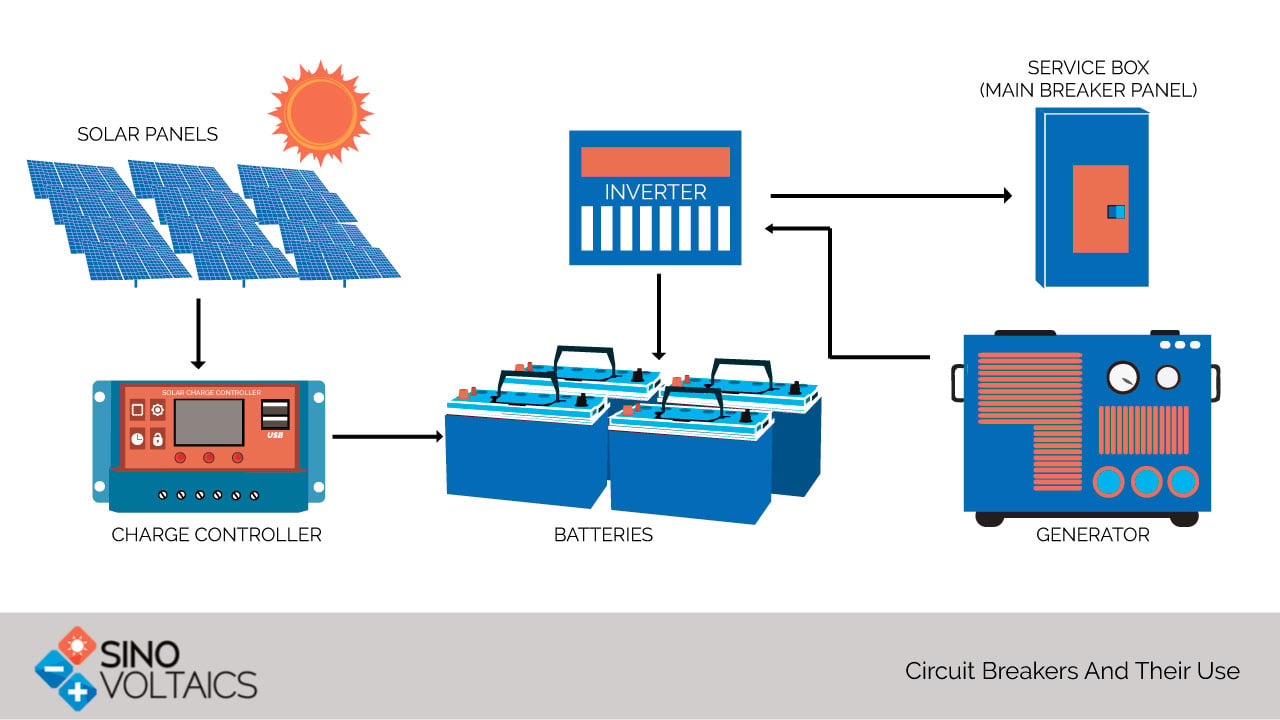Circuit Breakers in PV Systems
What is a Circuit Breaker?
Where a fuse is the simplest Over Current Protection device (OCPD) in electrical circuits, a circuit breaker, fondly called CB by the professional users, a much evolved, “higher being”. The main difference is that it is resettable. Where the fuse sacrifices itself while protecting an asset, the circuit breaker has a long life extending over hundreds and thousands of operations. Obviously, it is a much more expensive class of OCPD. Another difference is that CBs are used for relatively higher currents.
Construction
A circuit breaker protection system can consist of up to three parts. A sensing system that detects an overload situation, a relay that conveys the information to the switching arrangement, and the combination of contacts and the contact actuator. This arrangement is typically found in power transmission and distribution networks dealing with very high voltages, currents, and powers. Lower power circuit breakers have the sensing and actuation mechanisms collocated, or even built into a single unit. 
Types of Sensing Systems
There are three types of sensing systems: magnetic, thermal, or electronic. However, a combination may also be used. • Magnetic- The current to be sensed, or a known fraction of it is passed through a coil whose magnetic effect can be used to actuate the contacts and open them. • Thermal- the current passes through a heater which deforms a bimetallic strip and releases the spring-loaded actuating mechanism. • Electronic- current level is monitored through a calibrated resistance, and operates an FET or other electronic switch.
Circuit Breaker Ratings
Circuit breakers are specified by the voltage and current they can interrupt. In special situations, the speed of operation is important, ie, in how many milliseconds does it stop the specified current. This time may be critical where flow of heavy current for an appreciable time can damage the protected equipment.
Arc Extinction
An important issue in over current protection devices like fuses and circuit breakers used at high power levels is arc extinction. When we try to interrupt current flowing in an inductive circuit a voltage is produced (Lens’s law) which tries to sustain the current. As the circuit breaker contacts move away from each other, the space between them can get ionized and an electric arc can be caused. It is important to prevent, or extinguish this arc at the earliest. Power breakers are especially designed for this purpose, and the maximum time of arc extinction at the specified voltage and current levels is an important parameter. Interrupting a DC arc is more complex because AC automatically reduces toy a zero-current level twice in a cycle whereas DC does not have any such moments.
Circuit Breakers in PV Systems
Recommendations for use of protection of devices including circuit breakers in PV modules against over current conditions are given in IEC 60269-6 (volume 6 of IEC 60269-6) and also UL 248-19. For CBs also, IEC recommend a 20% and 25% margin in voltage and overload current, respectively. Again, UL recommendations are nearly the same. Ratings are specified by the manufacturers at given ambient conditions. Where temperatures exceed this value, derating must be applied according to manufacturer’s specifications. Calculations follow the same lines as for fuses.
100% and 80% Rating
The 25% current margin is applicable for circuit breakers which are UL listed for 100% rating. For those listed as 80% rated, another 25% margin should be allowed making a total of 56% margin. (1.25 x 1.25 = 1.56)

Tom
on 10 Oct 2023Tammy
on 09 May 2023